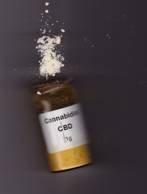W
whiterasta
Thats a study on hemp bast fibers, we are extracting flowers for resin. What about the waxes similar to these under c40
http://lipidlibrary.aocs.org/Lipids/waxes/index.htm
Table 1. The major constituents of plant leaf waxes.
n-Alkanes CH3(CH2)xCH3 21 to 35C - odd numbered Alkyl esters CH3(CH2)xCOO(CH2)yCH3 34 to 62C - even numbered Fatty acids CH3(CH2)xCOOH 16 to 32C - even numbered Fatty alcohols (primary) CH3(CH2)yCH2OH 22 to 32C - even numbered Fatty aldehydes CH3(CH2)yCHO 22 to 32C - even numbered Ketones CH3(CH2)xCO(CH2)yCH3 23 to 33C - odd numbered Fatty alcohols (secondary) CH3(CH2)xCHOH (CH2)yCH3 23 to 33C - odd numbered β-Diketones CH3(CH2)xCOCH2CO(CH2)yCH3 27 to 33C - odd numbered Triterpenols Sterols, α-amyrin, β-amyrin, uvaol, lupeol, erythrodiol Triterpenoid acids Ursolic acid, oleanolic acid, etc
Hemp is Cannabis Sativa and the bast fiber is the one of the lowest lipid portions of the plant. The lipid fraction is not different from drug cannabis except drug cannabis is usually higher in resin therefore waxes also.




